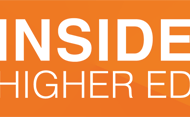The Status of Federal Student Aid Programs

Inside Higher Ed
Meghan Brink
August 10, 2022
The National Association of Financial Aid Administrators compiles an annual report of the latest data on major federal student aid programs. The new National Student Aid Profile provides an overview of how federal student aid programs are being allocated, how much the federal government is spending on these programs, and how much each student is receiving depending on their income level.
The federal government currently offers seven main student aid programs under Title IV of the Higher Education Act of 1965. This includes direct aid programs such as the Pell Grant, the Federal Supplemental Education Opportunity Grant, and Federal Work-Study as well as student loan programs like the Federal Direct Subsidized and Unsubsidized Loans, Graduate PLUS Loans, and Parent PLUS Loans. The report is based on the most recent data from the Education Department.
Overall, in the 2020-2021 award year, the federal government awarded $26.5 billion in Pell Grants to 6.4 million students. The federal government awarded $1.2 billion in federal Supplemental Educational Opportunity Grant (FSEOG) to 1.6 million students and $1.1 billion in federal work-study to 579,000 students in award year 2019-20.
The states that were awarded the most funding for institutional federal student aid programs (FSEOG and Federal Work Study) were California, New York, Pennsylvania, and Florida. California, which received the most funding in award year 2021-2022, was awarded $108 million for FSEOG across 388 colleges and $133 million for Federal Work Study across 328 colleges.
For federal student loan programs, a total of 10.4 million borrowers received Federal Direct Loans while another 1 million received Federal Direct PLUS Loans.
The report also tracked legislation introduced in Congress related to student aid. In 2021, 101 student aid-related bills were introduced, compared to 47 in 2020 and 160 in 2019. Of the bills introduced last year, 32 percent addressed student loans and repayment, 16 percent addressed consumer information, and 13 percent addressed quality and accountability.
Continue Reading
Share








